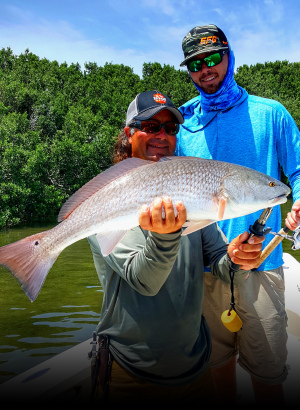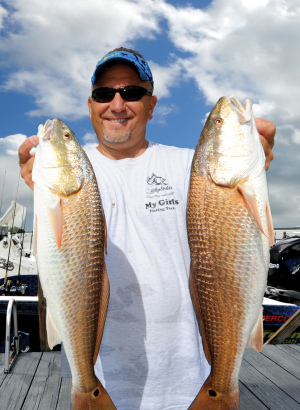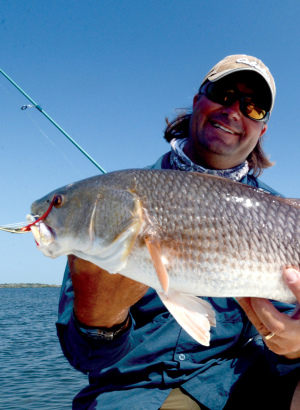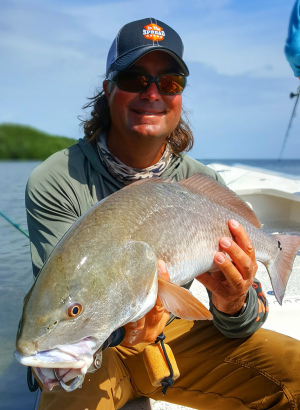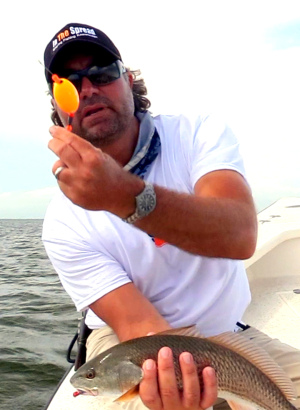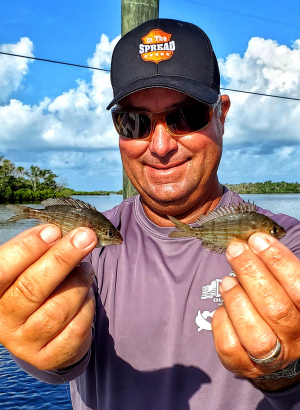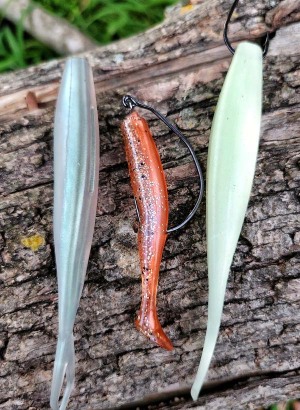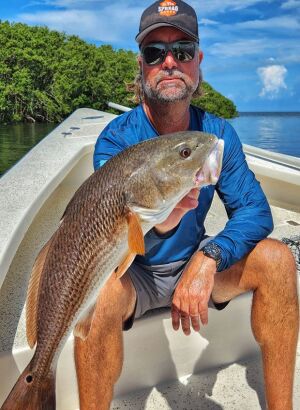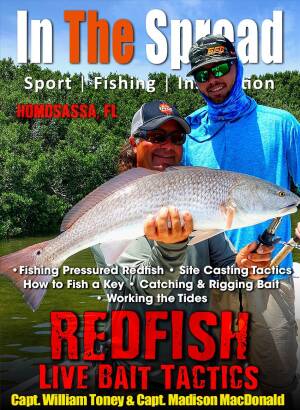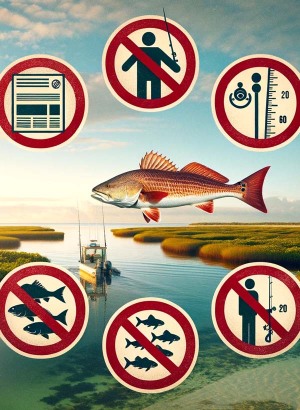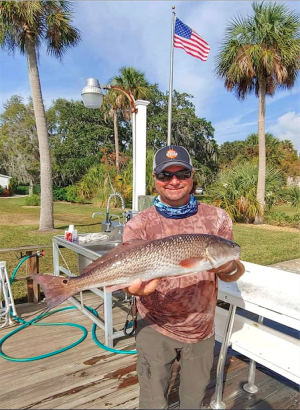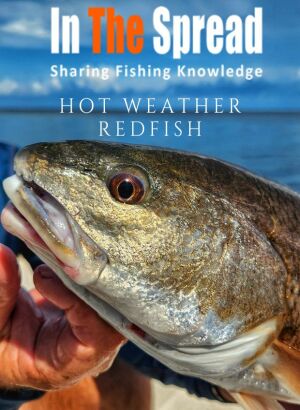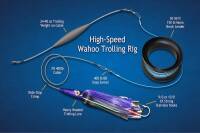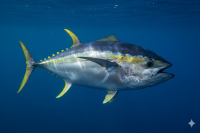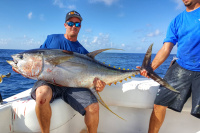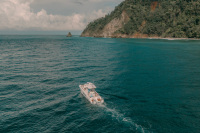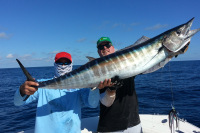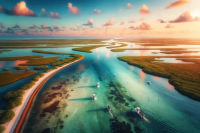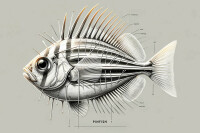Spring redfish fishing in Florida transforms as these gamefish abandon winter hideouts for productive feeding areas. Learn proven techniques for timing tides, selecting gold spoon lures, and targeting limestone bottom structures where redfish congregate. Professional guide strategies help you catch more redfish during this peak season.
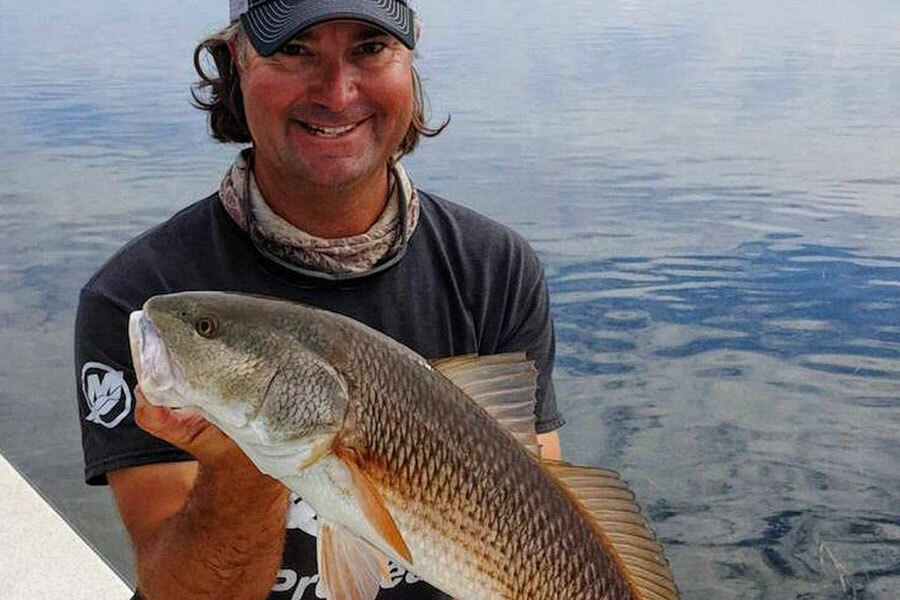
How to Catch Redfish - Spring Fishing with William Toney
How to Catch Redfish in Spring: Expert Guide to Florida's Gulf Coast
As Florida's waters warm during spring, redfish behavior undergoes dramatic changes that savvy anglers can exploit for exceptional fishing success. This seasonal transformation represents one of the most predictable and productive periods for targeting these copper-colored gamefish throughout the Gulf Coast region. Understanding these spring redfish fishing patterns on Florida's Big Bend and adapting your strategy accordingly is the best way to catch redfish during this productive season. The shift from winter to spring creates a feeding frenzy as redfish abandon their cold-weather hideouts and actively pursue abundant baitfish in previously vacant areas, offering anglers unprecedented opportunities for success.
Understanding Spring Redfish Migration Patterns Florida
Florida redfish exhibit distinct seasonal movement patterns that directly impact your fishing success, with spring representing the most dramatic shift in their annual cycle. During the cooler winter months, these prized gamefish seek shelter in protected environments where they can conserve energy and find consistent food sources. However, spring triggers a significant behavioral shift driven by rising water temperatures, increased baitfish activity, and changing environmental conditions. This migration pattern has been observed and documented by professional guides across Florida's Gulf coastal waters for decades, making it one of the most reliable fishing phenomena anglers can exploit. The transformation is so pronounced that many experienced anglers completely change their fishing strategies between winter and spring to capitalize on these predictable movements.
Winter to Spring Transition
- Temperature-driven movement: As water temperatures rise, redfish leave protected coves and wind-sheltered shorelines
- Food source availability: Spring brings abundant baitfish to open waters around passes and keys
- Habitat preference shift: Limestone bottom spring redfish spots and turtle grass areas become primary feeding zones
- Increased activity levels: Warmer water temperatures boost metabolism and feeding aggression
Best Tide Times Redfish Fishing Spring Strategies
Timing your fishing trips with optimal tidal conditions dramatically improves your chances of catching redfish in Florida waters, often making the difference between a successful outing and a frustrating day on the water. Spring redfish respond predictably to specific tidal phases that concentrate baitfish and create feeding opportunities, with certain tide combinations producing remarkable results. Professional guides consistently emphasize that understanding tidal influence is more important than any other single factor when targeting redfish during spring months. The relationship between tides, baitfish movement, and redfish feeding behavior becomes even more pronounced during spring when fish are actively feeding to recover from winter and prepare for spawning activities.
Prime Tidal Windows
- Incoming tide advantage: Good incoming tides push baitfish into shallow feeding areas where redfish ambush prey
- Early outgoing effectiveness: The first hour of high outgoing tide maintains baitfish concentrations
- New moon redfish fishing tips: Last hour of incoming tide near new and full moons produces exceptional results
- Current-driven feeding: Strong tidal flow creates feeding triggers that activate aggressive redfish behavior
Best Locations for Spring Redfish Fishing Success
Selecting productive fishing locations requires understanding how spring redfish fishing techniques differ from winter patterns, as redfish completely change their habitat preferences with the changing seasons. Spring redfish gravitate toward specific structural elements and bottom compositions that support abundant prey species, abandoning the protected areas they favored during colder months. These location changes aren't subtle - they represent a complete shift in how and where redfish live, feed, and travel throughout Florida's coastal waters. Successful anglers learn to think like predators, identifying areas where environmental conditions create natural feeding opportunities that redfish simply cannot resist.
High-Percentage Locations
- Cuts between keys: Strong current flow concentrates baitfish and creates natural feeding funnels
- Creek mouths: Outflow areas where freshwater meets saltwater attract diverse prey species
- Rocky bottom structures: Turtle grass bottom redfish fishing areas provide cover for crustaceans and small fish
- Pass entrances: Deep water access combined with shallow feeding flats creates ideal redfish habitat
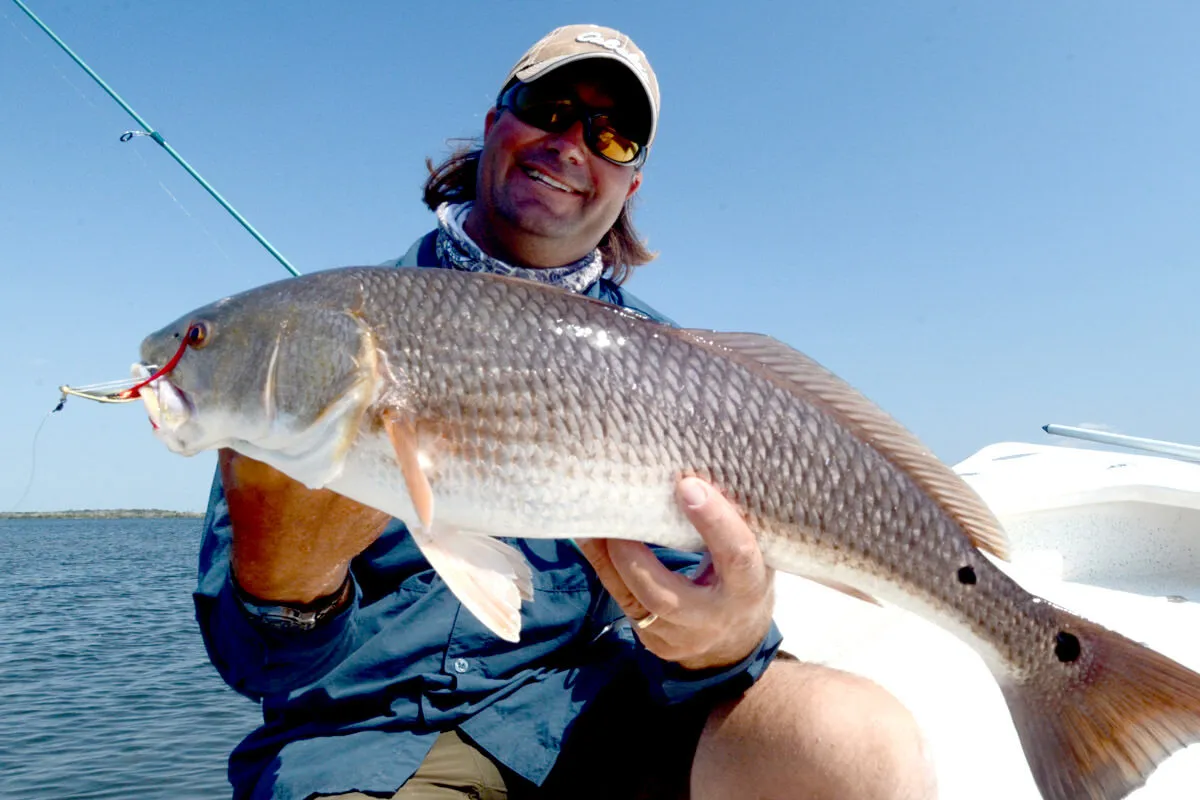
Best Lures for Redfish: The Gold Spoon for Redfish Advantage
Selecting the right artificial lure for redfish significantly impacts your success rate during spring fishing, with some lures proving dramatically more effective than others under specific conditions. While various redfish lures can be effective throughout the year, spring conditions create unique opportunities where certain presentations excel above all others. The effectiveness of specific lures during spring isn't just anecdotal - it's based on decades of professional guide experience and scientific understanding of redfish behavior during this critical feeding period. Understanding why certain lures work better than others helps anglers make confident choices and fish with the conviction that leads to success.
The Gold Spoon Redfish Fishing Rocky Bottom Method
- Wobble action effectiveness: Mimics injured baitfish that trigger instinctive predatory responses
- Flash and vibration: Gold coloration and erratic movement pattern attract redfish from considerable distances
- Versatile presentation: Works effectively across various depths and bottom types
- Snag resistance: Proper technique minimizes hang-ups in structure-rich areas
1/4 oz Gold Spoon Redfish Techniques
- Size selection: 1/4 oz weight provides ideal casting distance while remaining snag-resistant
- Immediate retrieval: Start retrieving instantly after lure contact to avoid snags
- Variable speed control: Experiment with your retrieve to match baitfish behavior
- Structure targeting: Focus on limestone bottom spots where this lure excels
Professional Spring Redfish Fishing Tips for Advanced Success
Expert Florida redfish fishing advice emphasizes technique refinement beyond basic lure selection, focusing on the subtle skills that separate consistently successful anglers from occasional lucky ones. These stealth fishing techniques for spring redfish represent years of accumulated knowledge from professional guides who fish these waters daily and understand the nuanced behaviors that lead to consistent success. The difference between good and great redfish fishing often lies not in equipment or location selection, but in mastering these advanced techniques that maximize your effectiveness in any given situation.
Reading the Water for Spring Redfish Signs
- Visual indicators: Look for tails, wakes, and nervous water that signal feeding redfish presence
- Baitfish behavior: Jumping or scattered baitfish often indicate predator activity below
- Current edge identification: Redfish frequently hunt along current breaks and drop-offs
- Structural awareness: Understand how bottom composition influences redfish positioning
Redfish Fishing Strategies for Covering Water Efficiently
- Fan casting patterns: Cover water methodically rather than random casting
- Patience and persistence: Finding productive redfish spots requires thorough area coverage
- Approach stealth: Even aggressive spring redfish can be spooked by careless boat positioning
- Adaptability focus: Adjust techniques based on real-time observations and conditions
Best Redfish Tackle Setups for Spring Success
Your redfish tackle selection directly influences your ability to present lures effectively and land fish consistently, with spring conditions in Florida waters demanding specific equipment considerations that differ from other seasons. Spring redfish fishing presents unique challenges including stronger fish due to increased feeding activity, varied bottom conditions from rocky structure to grass flats, and the need for versatile equipment that performs across different scenarios. Professional guides fine-tune their tackle selections based on decades of experience understanding what works consistently rather than relying on marketing claims or theoretical advantages.
Essential Equipment Components
- Rod selection: Medium-heavy action provides backbone for fighting redfish while maintaining sensitivity
- Reel considerations: Smooth drag system handles powerful redfish runs without line failure
- Line choices: 15-20 lb braided line offers excellent sensitivity and casting distance
- Leader material: 20-30 lb fluorocarbon leader provides abrasion resistance around structure

